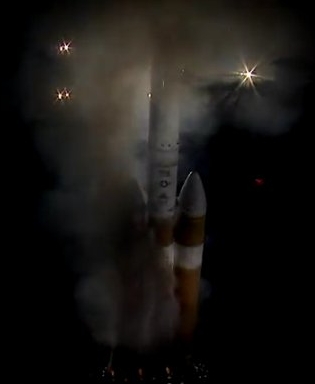Blue Origin pinpoints problem with BE-4 engine
Capitalism in space: According to ULA’s CEO Tory Bruno, Blue Origin has identified and fixed the issue with the turbopumps of its new BE-4 rocket engine.
United Launch Alliance Chief Executive Tory Bruno said Friday that the problem was “sorted out,” and that the full-scale, flight-configured BE-4 engine is now accumulating a lot of time on the test stand. Bruno made his comments about one hour into The Space Show with David Livingston.
Bruno’s company, ULA, is buying the BE-4 engine to provide thrust for the first stage of its upcoming Vulcan-Centaur rocket. This booster may make its debut next year, although ULA is still awaiting delivery of BE-4s for the first flight. Two of these large engines—each providing about 25-percent more thrust than the RS-25s used on the Space Shuttle—will power each Vulcan rocket.
Here’s what I think happened: Blue Origin struggled to fix the problem for several years. ULA, suspecting problems, got increasingly impatient at the lack of delivery of an operational engine, and threatened to dump the BE-4 in favor of Aerojet Rocketdyne’s engine unless it was given a test engine to analyze. Blue Origin finally complied in July, and very quickly ULA pinpointed the problem and the solution.
While this is good news for the development of both ULA’s Vulcan and Blue Origin’s New Glenn rockets, it does not speak well for the development team at Blue Origin. Nonetheless, the engine is always the big hurdle for designing a rocket, and that hurdle has now been passed.
During Bruno’s interview he also said that ULA still intends to recover and reuse these engines when it flies its Vulcan rocket, but gave no timeline for when that might happen. Initially, and probably for several years at least, expect those engines to be expendable and tossed into the ocean with each flight.
Capitalism in space: According to ULA’s CEO Tory Bruno, Blue Origin has identified and fixed the issue with the turbopumps of its new BE-4 rocket engine.
United Launch Alliance Chief Executive Tory Bruno said Friday that the problem was “sorted out,” and that the full-scale, flight-configured BE-4 engine is now accumulating a lot of time on the test stand. Bruno made his comments about one hour into The Space Show with David Livingston.
Bruno’s company, ULA, is buying the BE-4 engine to provide thrust for the first stage of its upcoming Vulcan-Centaur rocket. This booster may make its debut next year, although ULA is still awaiting delivery of BE-4s for the first flight. Two of these large engines—each providing about 25-percent more thrust than the RS-25s used on the Space Shuttle—will power each Vulcan rocket.
Here’s what I think happened: Blue Origin struggled to fix the problem for several years. ULA, suspecting problems, got increasingly impatient at the lack of delivery of an operational engine, and threatened to dump the BE-4 in favor of Aerojet Rocketdyne’s engine unless it was given a test engine to analyze. Blue Origin finally complied in July, and very quickly ULA pinpointed the problem and the solution.
While this is good news for the development of both ULA’s Vulcan and Blue Origin’s New Glenn rockets, it does not speak well for the development team at Blue Origin. Nonetheless, the engine is always the big hurdle for designing a rocket, and that hurdle has now been passed.
During Bruno’s interview he also said that ULA still intends to recover and reuse these engines when it flies its Vulcan rocket, but gave no timeline for when that might happen. Initially, and probably for several years at least, expect those engines to be expendable and tossed into the ocean with each flight.

